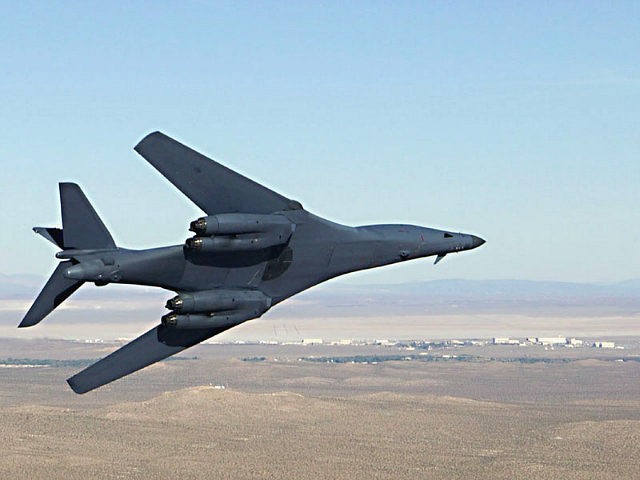South Korean fighter jets are scheduled to train with two American B-1B Lancer supersonic bombers on Tuesday, a demonstration of cooperation and military power at a moment when questions about the new South Korean administration linger and anger at North Korea is mounting over the murder of American college student Otto Warmbier.
Reuters quotes a South Korean air force official who said the drill will also involve two South Korean F-15K fighters but would not elaborate on the exercises that would be included.
The Korea Herald, however, quotes an unidentified source who said the Guam-based Lancers would “carry out mock bombing practice at the Pilsung range in the eastern province of Gangwon.” The Pilsung range is jointly operated by the American and South Korean militaries.
U.S. Pacific Air Forces declined public comment about the exercise, citing operational security concerns.
The Korea Herald mentions Warmbier’s death in the context of the Lancer drill and also the delicate political situation in Seoul:
The B-1B’s flight here also follows controversial remarks by Moon Chung-in, a special adviser to South Korean President Moon Jae-in on unification, security and foreign affairs, that Seoul may decrease the deployment of US strategic assets here and the number of the allies’ combined military drills if the North freezes its nuclear and missile development. The presidential office dismissed it as the scholar’s personal view, not the government’s official position.
North Korea denounced a similar exercise in May as a “nuclear bomb dropping drill.”
The National Interest commemorated the B-1B exercise by reprinting a September article that christened the Lancer as “the supersonic killer North Korea should fear.” Contrary to North Korea’s claims, the Lancer is no longer a nuclear weapons platform. It has been optimized for low-altitude penetration, ideally after other planes have softened up enemy air defenses, and deploying a huge payload of precision-guided conventional munitions.
“During the first six months of Operation Enduring Freedom in Afghanistan, eight Lancers dropped nearly 40 percent of the total ordnance delivered by coalition air forces. This included nearly 3,900 JDAMs, or 67 percent of the total,” Fighter Sweep notes in a gushing tribute to the “Bone.”

COMMENTS
Please let us know if you're having issues with commenting.